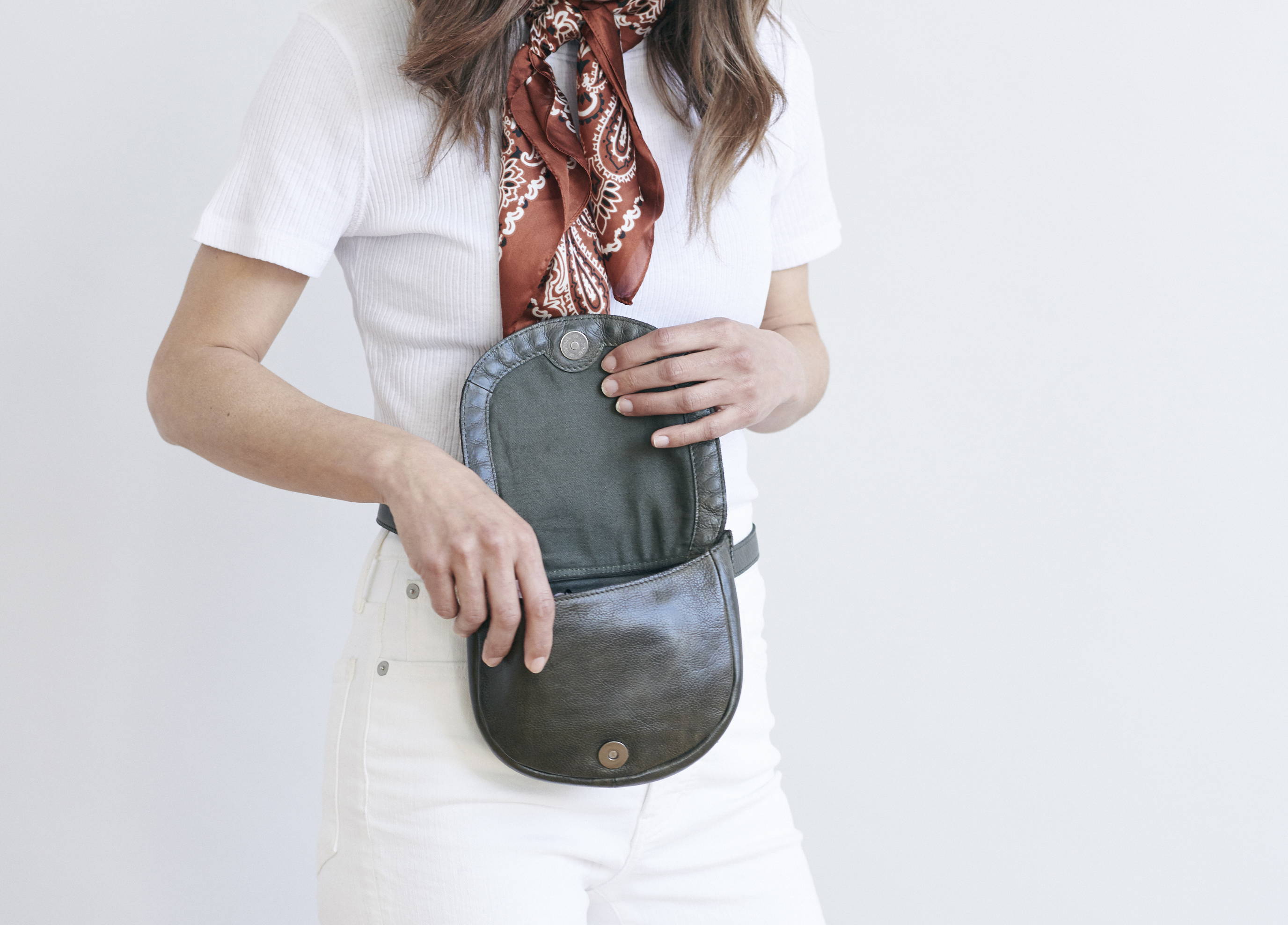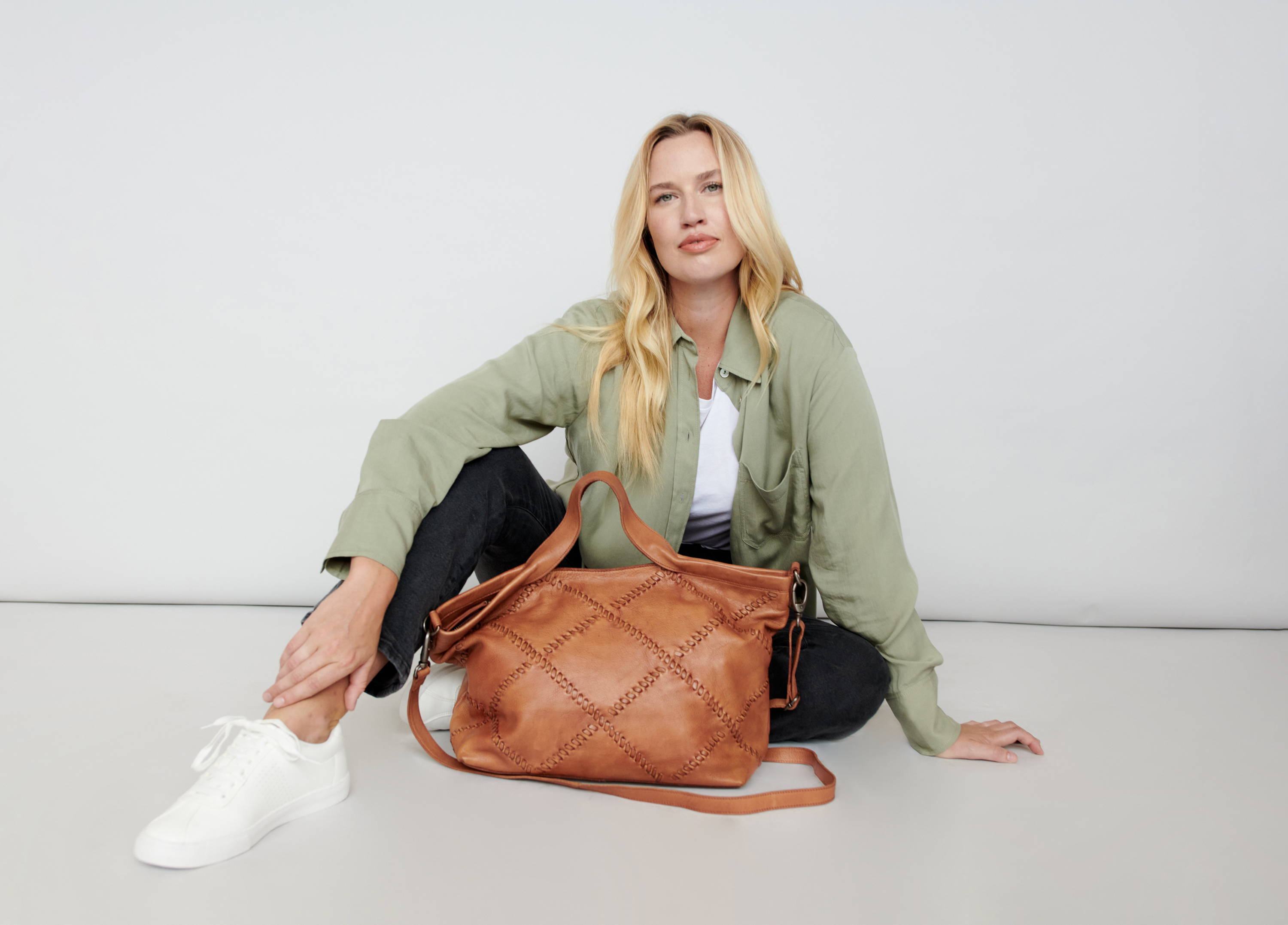
10 Different Types of Leather: Your Complete Guide to Quality & Care
Shopping for leather goods can feel overwhelming when terms like "full-grain", "top-grain", and "genuine" get thrown around without clear explanations.
What do these terms actually mean, and why should you care when buying handbags, shoes, belts, and wallets?
In this guide, we'll break down everything you need to know about the different types of leather, from the highest quality options to budget alternatives, so you can make confident choices for your next leather investment.
Different Types of Leather
Here are 10 different types of leather, ranked from the highest quality to the lowest:
|
Type |
Source/Process |
Quality |
Key features |
Best for |
Price |
|
Full-grain leather |
Entire top hide; unaltered |
Highest |
|
|
Premium |
|
Top-grain leather (or corrected-grain leather) |
Top hide; sanded/treated |
High |
|
|
High |
|
Nubuck leather |
Sanded top-grain leather; similar to suede |
High |
|
|
High |
|
Exotic leather |
Non-cow hide (e.g., alligator, snake, ostrich) |
High |
|
|
High |
|
Patent leather |
Treated/coated leather |
Medium-high |
|
|
Medium-high |
|
Suede leather |
Split-layer leather from the underside of an animal hide |
Medium |
|
|
Medium |
|
Genuine leather |
Lower hide leather or scraps |
Medium-low |
|
|
Medium |
|
Split-grain leather |
Lower hide; top-grain layer removed |
Medium |
|
|
Low-medium |
|
Faux leather |
Man-made leather made from synthetic materials (PU/PVC) |
Lowest |
|
|
Low |
|
Bonded leather (or reconstituted/blended leather) |
Leather scraps bonded with chemicals and fillers |
Lowest |
|
|
Low |
Other types of leather:
- Aniline leather: Premium leather that has been dyed with transparent soluble dyes.
- Semi-aniline leather: Similar to aniline leather but with a thin protective topcoat.
- Waxed leather: Full-grain leather treated with wax/oils for a smoother finish.
- Sustainable leather: A byproduct of farms that use environmentally friendly tanning practices.
- Horse leather (cordovan): A highly-prized, dense, durable leather made from horsehide.
The Leather Hierarchy Ladder: From Best to Worst
Real leather is a natural material made from animal hide that has been treated through a tanning process. This treatment method transforms raw cowhide into a durable, flexible, and uber-stylish material that can last for decades when properly maintained.
However, not all leather is created equal.
The quality and characteristics of each type depend on three main factors:
- Which part of the hide is used
- How it's sourced and processed
- What finishing treatments are applied
Now, let's break down each leather type in detail, starting with the best of the best:
1. Full-grain leather
Full-grain leather is the highest quality leather around. It uses the complete top layer of the hide, leaving the natural grain pattern completely intact. As the least processed leather, it's favored for its durability, thickness, and natural appearance.
Characteristics
- No sanding, buffing, or artificial alterations
- Natural characteristics preserved
- Thickest and most durable leather option
- Develops a beautiful patina over time
- Most expensive but longest-lasting
At Latico Leather, every item is handcrafted by skilled artisans using buttery-soft, 100% premium full-grain leather. Our signature pieces, like the Harbor Crossbody and Kiki Shoulder Bag, combine style with longevity that can be enjoyed for decades!
Best full-grain buys:
- Full-Grain Leather totes
- Full-Grain Leather backpacks
- Full-Grain Leather shoulder bags
- Full-Grain Leather crossbody bags
- Full-Grain Leather sling bags
- Full-Grain Leather hobo bags
2. Top-grain leather
Top-grain leather is the second-highest quality leather on our list. As the name suggests, it's made from the top layer of the hide, which is lightly sanded/treated to remove any imperfections. Because it's a little thinner than full-grain leather and generally more flexible, it's a prime choice for high-end handbags, wallets, and jackets.
Characteristics
- Smooth surface
- Some natural characteristics are removed for uniformity
- Thinner and more flexible than full-grain leather
- Often rendered and treated
- No distinctive patina
Top-grain leather strikes an excellent balance between quality and practicality, making it ideal for professional settings where a polished look matters.
Best for:
- Work bags
- Structured totes
- Furniture upholstery
3. Nubuck leather
Nubuck leather ranks third in our quality hierarchy. It's made from the top grain of the hide that's buffed or sanded to create a velvety surface similar to suede. However, it's more durable than suede (which is made from split leather) and is commonly used for high-quality shoes, bags, upholstery, and jackets.
Characteristics
- Luxurious, soft texture
- Made from premium top-grain leather
- More durable than suede leather
- Prone to staining and watermarks
- Requires special care and maintenance
Nubuck leather offers a refined yet rugged aesthetic that ages beautifully with proper care, making it a favorite for both fashion and function. Its velvety nap is popular among shoe and boot designers for its premium look and feel.
Best for:
- Shoes
- Bags
- Money clips
- Upholstery
4. Exotic leather
Exotic leathers come from non-traditional animal sources like alligators, crocodiles, snakes, ostriches, and stingrays. These leathers offer unique textures and patterns that can't be replicated easily, making them extremely sought-after in luxury fashion items like handbags, shoes, and wallets. Exotic leather is generally more expensive due to its rarity and exclusivity.
Characteristics
- Distinctive patterns/textures
- Often rare and exclusive
- High-end luxe positioning
- Specialty appeal
At Latico Leather, our lizard-inspired Eloise Wallets use innovative techniques to recreate exotic textures on superior full-grain cowhide, achieving that luxury look without the high exotic pricing.
Best for:
- Handbags
- Wallets/purses
- Boots
- Belts
5. Patent leather
Patent leather is treated with a glossy reflective coating that gives it a mirror-like finish. It's often used for formal shoes, evening handbags, and accessories. Patent leather is water-resistant due to its lacquered coating but less breathable and flexible than other leather types.
Characteristics
- High-gloss, reflective surface
- Water-resistant
- Formal, elegant appearance
- Easy to clean
- Less breathable
While all of our leather goods are crafted from 100% full-grain leather, select items, like the Gio Wallet, feature a foil-coat finish that adds a high-gloss look similar to patent leather.
Best for:
- Shoes
- Bags
- Belts
- Accessories
6. Suede leather
Suede leather is crafted from the underside of the animal hide, giving it a distinctive soft, fuzzy texture that's instantly recognizable. It's less durable than nubuck leather and more prone to staining, but is highly valued for its texture in fashion footwear, jackets, and accessories.
Characteristics
- Soft, velvety surface with natural nap
- Made from the inner layer of the hide
- Prone to staining
- Less water resistant than other leather types
Suede perfectly combines luxury and casualness, which makes it ideal for fashion-forward pieces. While it needs a little more TLC than top-grain leather, its distinctive texture and comfort make it worth the extra attention.
Best for:
- Shoes
- Garments
- Accessories
7. Genuine leather
Don't be fooled by the word "genuine" here. While genuine leather is technically real leather, it's often made from the lower layers of the hide or leather scraps. This means the quality can vary significantly, as we don't really know how much real leather is being used. The material is processed to look smooth, but it's less durable than higher grades and ages poorly.
Characteristics
- Quality variations
- Often treated with artificial finishes
- More affordable than full- or top-grain leather
- Ages poorly
- Less durable
Since genuine leather is in the lower price bracket, it's often used for affordable items like belts, wallets, bag linings, and cheaper-quality bags.
Best for:
- Bags
- Wallets
- Belts
- Linings
8. Split-grain leather
Split-grain leather comes from the fibrous inner layer of the hide after the top-grain has been removed. It's significantly less durable and has a rougher texture compared to full-grain variants. Split leather is often used when cost is a concern and aesthetics are less important, such as for work boots and basic upholstery.
Characteristics
- Made from fibrous lower levels of cowhide
- Less durable than full- and top-grain types
- More affordable
- No patina development
- Used for functional leather goods
Split-grain leather is all about function over fashion. It might not have the premium feel of full-grain leather, but it's a solid pick for tough, everyday gear that needs to handle wear and tear.
Best for:
- Tool belts
- Work boots
- Wallets
- Upholstery
9. Faux leather
Faux leather, also known as vegan or synthetic leather, is man-made. Designed to mimic the appearance of real leather, it's made entirely from non-animal products such as polyurethane (PU) or polyvinyl chloride (PVC). Faux leather can look pretty impressive, often manufactured to resemble unique textures, including grainy, embossed, or smooth.
Characteristics
- Made from synthetic materials (PU/PVC)
- No animal hide used
- More affordable than real leather
- Vegan/cruelty-free option
- Easier to clean
- No patina development
Faux leather is a good look-alike leather alternative, especially if you're after cruelty-free products. It's not as breathable or durable as the real deal, but it holds up well for everyday use and is super easy to clean.
Best for:
- Affordable items
- Vegan products
- Lower-end goods
10. Bonded leather
Bonded, blended, or reconstituted leather is the lowest quality leather, sitting at the bottom of the leather hierarchy barrel. It's often mushed-up leather scraps that are ground into a pulp and stuck (bonded) together with artificial chemicals and fillers. Even though bits of real leather are used, items generally fall apart quite quickly due to the binding agent factor.
Characteristics
- Minimal real leather content
- Not durable
- Inexpensive
- Short lifespan
- Does not age well
Bonded leather might look the part (initially, that is), but it's more style than substance. It's best for short-term use, so don't expect it to stick around forever.
Best for:
- Fast-fashion items
- Budget furniture
- Low-end goods
Leather Care & Maintenance Guide
Want to ensure your leather goods age like fine wine? Follow the care and maintenance tips below:
Regular cleaning & conditioning
- Wipe leather items with a soft, damp cloth to remove surface dirt and dust.
- Stay clear of abrasive cleaners or harsh chemicals, as they can damage the leather. Clean water works just fine!
- Routinely apply a leather conditioner to keep the leather moisturized, soft, and supple.
Protection & storage
- Use a waterproof spray to protect leather goods from moisture and stains (always test a small section first!).
- Store your products in a cool, dry spot away from direct sunlight.
- Avoid stacking items, as this can cause them to lose their shape.
Smart use
- Rotate your leather goods to prevent excessive wear and tear on a single item.
- Be mindful of sharp objects or rough surfaces that could scratch the leather.
- For stubborn stains, consider professional leather cleaning services.
FAQs
What's the difference between full-grain and top-grain leather?
The main difference between full-grain and top-grain leather is that full-grain leather retains the complete natural surface of the hide, while top-grain leather has been lightly sanded or buffed for a more uniform appearance.
Is genuine leather good?
Not really. Genuine leather is not the best quality leather as it's made from leather scraps with no real indication of how much real leather is used. The term "genuine" is often misleading.
How long should full-grain leather products last?
Full-grain leather goods can last for decades with the proper care and maintenance.
Final Thoughts
Understanding the different types of leather is your first step toward making a smart, long-term investment.
To recap: full-grain leather is the Rolls-Royce of leather types, while top-grain and nubuck are close runners-up. Faux leather makes a good choice if you're after cruelty-free alternatives, and bonded leather sits at the bottom of the leather grade ladder.
Looking for premium leather goods that last a lifetime? Explore Latico Leather's best sellers. From classy-cool crossbody bags to timeless totes and shoulder bags, you'll find exceptional quality that won't disappoint!

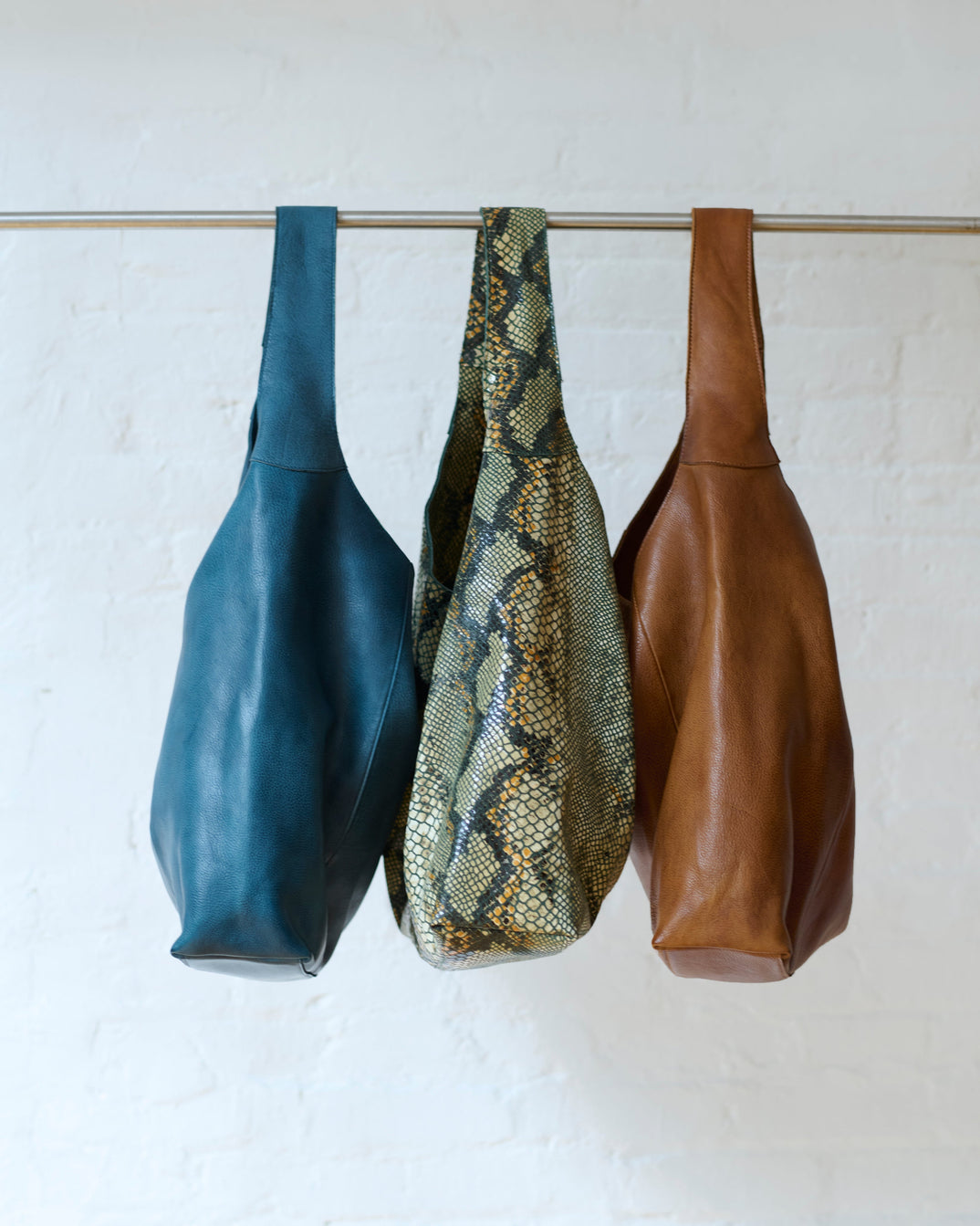
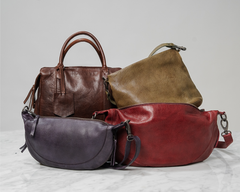
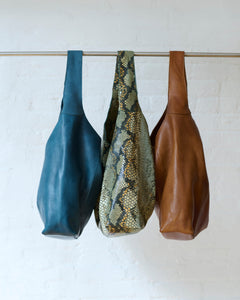
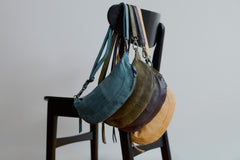
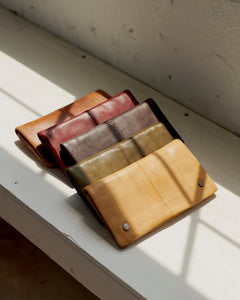
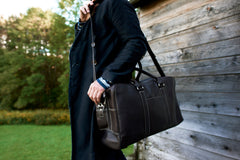
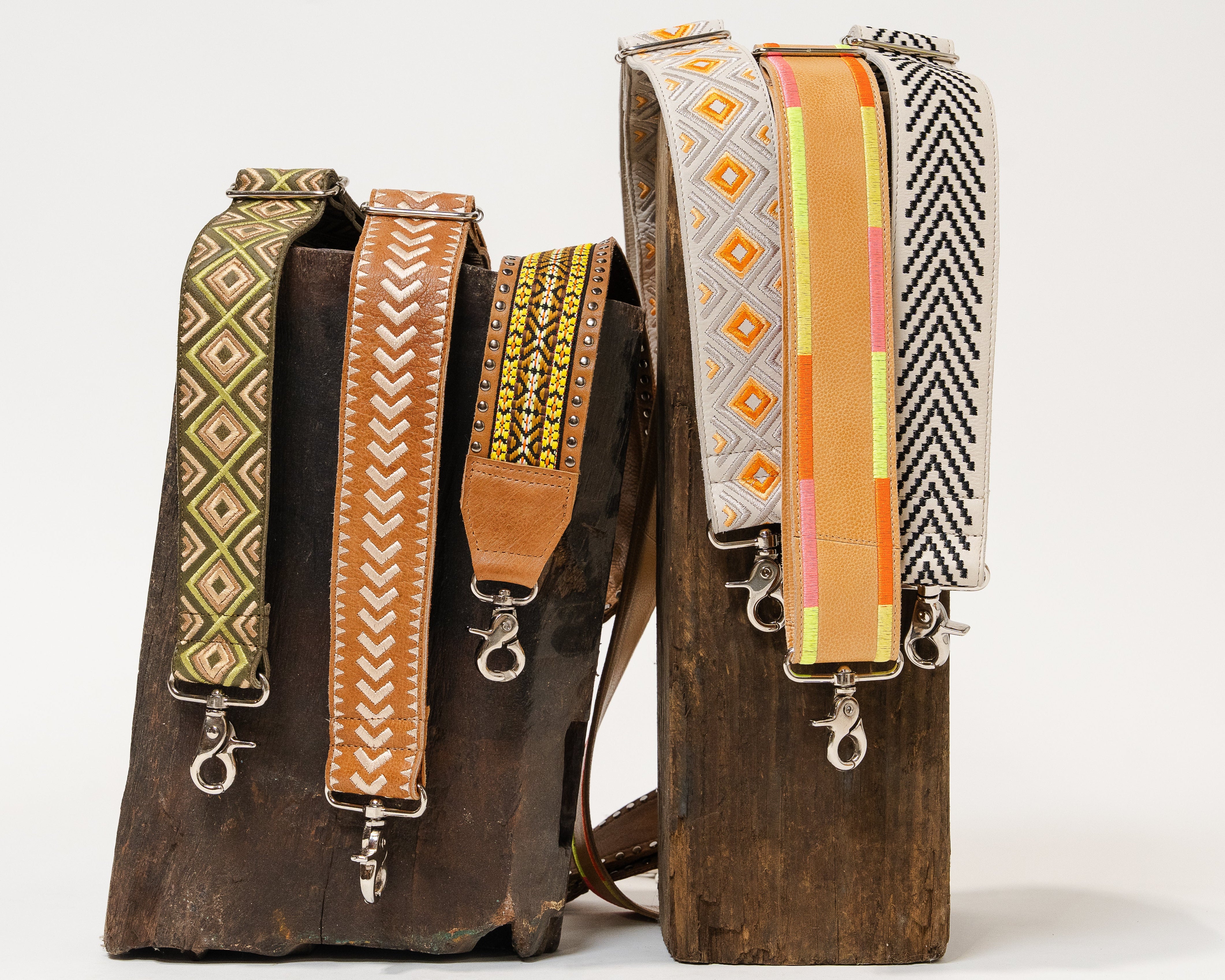
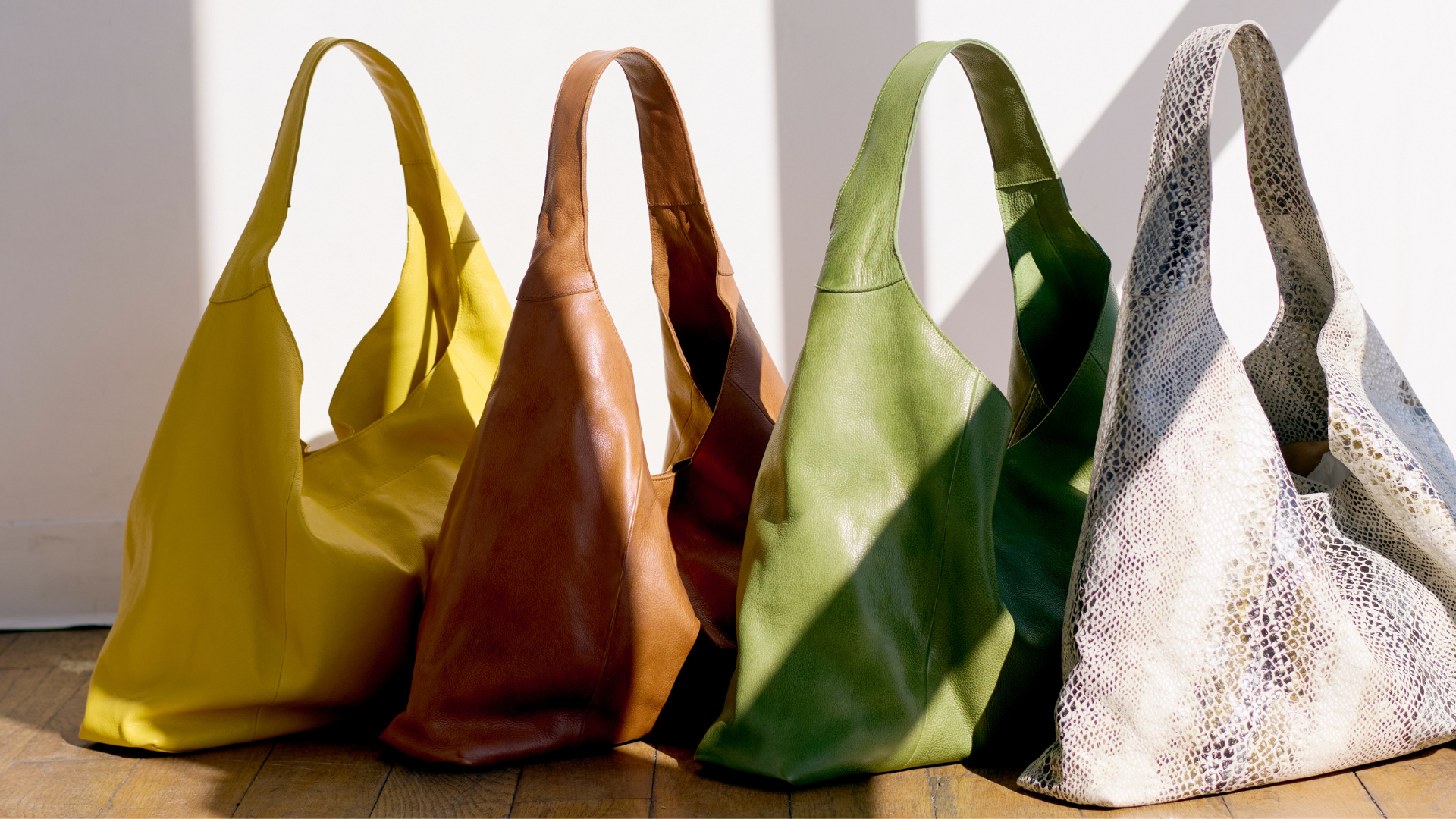
 Black
Black Bubble Black
Bubble Black Charcoal
Charcoal Cognac
Cognac Brown
Brown Cafe
Cafe Walnut
Walnut Almond
Almond Saddle
Saddle Eggplant
Eggplant Oxblood
Oxblood Burgundy
Burgundy Aubergine
Aubergine Tan
Tan Hazel
Hazel Ballet Slipper
Ballet Slipper Blush
Blush Camel
Camel Red
Red Orange
Orange Natural
Natural Burnt Orange
Burnt Orange Poppy
Poppy Plum
Plum Rosa
Rosa White
White Oat
Oat Grey
Grey Cobra
Cobra Desert Trail
Desert Trail Denim
Denim Indigo
Indigo Emerald
Emerald Teal
Teal Turquoise
Turquoise Sky Blue
Sky Blue Grass
Grass Green
Green Moss
Moss Olive
Olive Yellow
Yellow Lemon
Lemon Honey
Honey Chartreuse
Chartreuse Mustard
Mustard